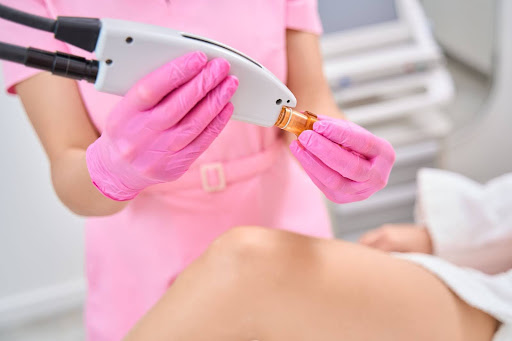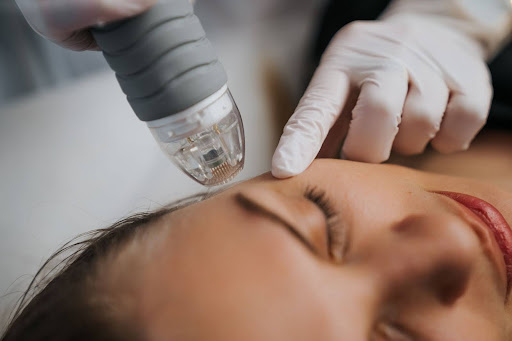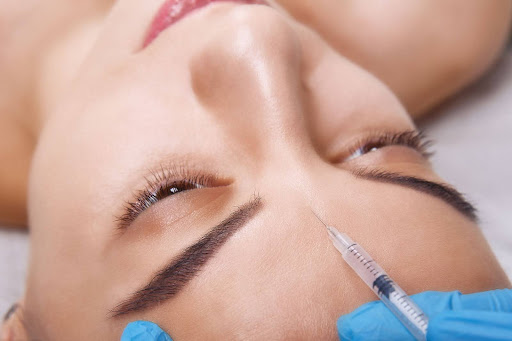Botox is a popular cosmetic treatment known for its ability to smooth out wrinkles and fine lines, giving you a more youthful appearance. However, to achieve the best results and avoid complications, it’s crucial to know what not to do after Botox. Whether you’re a first-time patient or a seasoned Botox user, understanding the post-treatment guidelines is key to maximizing the benefits and ensuring a smooth recovery. In this blog, we share essential tips and mistakes to avoid after receiving Botox, helping you maintain your results and enjoy your rejuvenated look for as long as possible.
Are You Interested in Botox?
At Botox Montreal, we offer cosmetic services designed to help you achieve your aesthetic goals. Our clinic provides personalized treatment plans that cater to your unique needs, ensuring natural-looking results that enhance your beauty. Whether you’re aiming to diminish fine lines, plump your lips, or rejuvenate your skin, Botox Montreal is here to help you.
Self-Care During Facial Rejuvenation: Essential Things to Avoid While Healing from Botox Medical Injections
During the healing process following Botox injections, practicing proper self-care is essential to achieve the best possible results. Let’s go through the critical things to avoid to ensure that your Botox treatment is both safe and effective.
The First 24 Hours After Botox Injections: Critical Aftercare
The first 24 hours after your Botox treatment are crucial to ensure the product settles properly and begins working as intended. During this period, it’s important to follow your healthcare provider’s aftercare instructions carefully to avoid any negative side effects.
Avoid Strenuous Exercise and Physical Activity
Strenuous exercise, including activities that elevate your heart rate or blood pressure, should be avoided for at least 24 hours after treatment. This includes vigorous exercise like running, weight lifting, and high-intensity workouts.
Increased blood flow from physical activity can cause the Botox to spread to unintended areas, potentially leading to muscle weakness in adjacent muscles or unwanted side effects such as facial asymmetry. Instead, opt for light activities like walking, which won’t affect your recovery process. Resuming your usual activity level too soon can interfere with the settling of the botulinum toxin and reduce the effectiveness of the treatment.
Don’t Touch or Rub the Treated Area
It’s tempting to touch or massage your face after an injectable treatment, but doing so can be harmful. Avoid touching, rubbing, or applying physical pressure to the treated areas for at least 24 hours. Facial massages should be avoided, as they can cause Botox to move into unintended areas and affect adjacent muscles. This precautionary measure helps ensure that the Botox stays in the targeted muscles, reducing the appearance of wrinkles where it’s most needed.
Avoid Heat Exposure
Heat exposure can affect the results of your Botox injections. Stay away from hot showers, tanning beds, saunas, and heat lamps for at least 24-48 hours after treatment. Excessive heat can increase blood flow and potentially cause the Botox to spread, leading to increased swelling, bruising, or even reduced effectiveness. If you need to wash your face, use cool water and avoid using hot water or heat-generating skin care devices. This helps maintain the effectiveness of Botox and minimizes the risk of unwanted side effects.
Skip Alcohol and Blood-Thinning Medications
Alcohol and certain blood-thinning medications, such as aspirin or fish oils, should be avoided for at least 24 hours. These substances can increase the risk of bruising and swelling by thinning the blood and expanding blood vessels. For the best results, follow your healthcare provider’s advice regarding medications and supplements before and after your treatment. If you’re taking prescription blood thinners for a medical condition, discuss this during your initial appointment to understand the best way to manage your medications.
Avoid Excessive Facial Expressions and Movements
In the hours after your treatment, it’s advisable to minimize excessive facial movements and expressions. While it may seem harmless, overusing your facial muscles can cause the Botox to spread beyond the targeted areas. This can diminish the effectiveness of the treatment and result in uneven or unnatural results.
For optimal outcomes, try to keep your facial expressions to a minimum for the first 24 hours. This includes avoiding activities that involve bending over or lying flat, as these positions can increase blood flow to the face and affect the distribution of the Botox.
The Ultimate Guide to Botox: What You Need to Know Before Your First Appointment
The First Week After a Botox Treatment: Avoiding Unintended Side Effects
While the first 24 hours are critical, the aftercare process extends beyond this period. Here’s what you should avoid during the first week after your Botox treatment to ensure a smooth recovery and the best possible results:
Stay Away from Other Facial Treatments
After receiving Botox, it’s important to avoid additional facial treatments, such as chemical peels, dermal fillers, or exfoliating scrub treatments, for at least one week. These procedures can interfere with the Botox settling process and may lead to complications like increased swelling or irritation.
If you’re planning on combining Botox with other cosmetic procedures, discuss a treatment plan with your healthcare provider to determine the best timing for each procedure. This will help you achieve a smoother appearance while minimizing the risk of adverse side effects.
Avoid Heat and Sun Exposure
Even after the initial 24-48 hours, it’s a good idea to continue avoiding excessive heat and sun exposure for the rest of the week. If you need to spend time outdoors, use a broad-spectrum sunscreen and wear protective clothing, such as a wide-brimmed hat, to shield your skin from harmful UV rays. This will not only protect your Botox results but also contribute to a healthy, anti-aging skincare routine.
Hold Off on Vigorous Exercise
While light exercise, such as walking, can be resumed after 24 hours, it’s best to avoid vigorous activities for the first week. Strenuous exercise can still increase blood flow and heart rate, potentially affecting Botox’s ability to settle properly in the muscles. This precaution helps ensure that the botulinum toxin remains effective in reducing the appearance of wrinkles without causing negative side effects.
Follow-Up with Your Healthcare Provider
Scheduling a follow-up appointment with your healthcare provider is essential. During this visit, your provider can assess the results of your Botox treatment and make any necessary adjustments to your treatment plan. If you experience minor side effects or have concerns about the recovery period, your provider can offer guidance and support to ensure your satisfaction with the results.
Botox Aftercare Instructions for Long-Term Maintenance
To maintain your youthful appearance, it’s important to follow a long-term care plan. This includes regular follow-up appointments, proper skincare, and making informed decisions about additional treatments.
Maintain a Gentle Skincare Routine
After your Botox treatment, it’s important to stick to a gentle skincare routine that avoids harsh products or techniques. Use mild cleansers and moisturizers that support the health of your skin without causing irritation. Avoid aggressive exfoliation or the use of assertive skincare devices (such as facial cleansing brushes or derma rollers), which can disrupt the skin’s healing process and potentially affect the results of your Botox treatment.
Plan for Follow-Up Treatments
Botox is not a permanent solution, and its effects typically last between three to six months. To maintain the appearance of smoother skin and reduced facial lines, you’ll need to schedule regular follow-up treatments. Your healthcare provider can help you determine the best timing for these appointments based on how your muscles have responded to the initial treatment.
Neuromodulator Frequency: How Often Should You Get Botox?
Schedule a Botox Treatment in Montreal
Botox Montreal is the premier destination for those seeking top-quality cosmetic treatments in Montreal. Our highly skilled team of medical professionals utilizes cutting-edge technology and advanced techniques to deliver natural-looking results that enhance your beauty. Whether you want to smooth fine lines, plump your lips, or rejuvenate your skin, our clinic offers tailored treatment plans that cater to your unique needs and goals.







